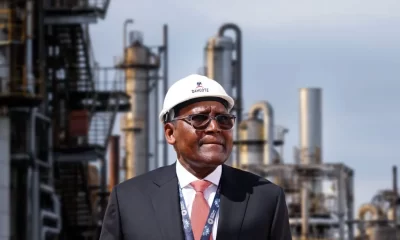Column
Flying Toilets

When we talk about “flying” what easily comes to mind is Flying Air crafts, birds and the much talked about Unidentified flying objects (U.F.OS).
However flying toilets is not new, it is derived from the old habits of squalid urban life style, among residents of slums and crowded settlements without toilet facilities.
In the early Two Thousand, the British Broadcasting Corporation came out with an odd story of a train derailment in Central Africa. The train was reported to have derailed because of slippery objects on the rail tracks. The international broadcaster described the slippery objects as flying toilets.
This apt description is derived from the common habit of residents who have cultivated the absurd behavior of defecating into “carrier Bags and throwing them from afar right onto the rail tracks. Such a phenomenon flies indiscriminately into the air and lands on any surface and in this example rail tracks.
In most underdeveloped and very poor environments, flying toilet is an odd sport, it is seen flying from windows into street corners or brazenly thrown into drains and gutters. It is common among slum dwellers in major cities of the world and institutions of learning who lack toilet facilities. They defecate into bags in their closets and fly them like short-put into unholy places. These flying objects land on surfaces that are in close proximity to the residents, it could be lagoon, creeks, drains, rail tracks, undesignated dumps and landfills, including streets.
According to the World Health Organization 46 million Nigerians lack toilet facilities.
Those who lack this basic water and sanitation facility practice different forms of open defecation.
States that top the list of persons engaged in open defecation include Kwara, Plateau, and Ebonyi according to UNICEF. This is a sad commentary in modern day Nigeria. Indeed open defecation is a common practice in the North and many riverine communities in the south including slums of Lagos and Port Harcourt. This year’s world Toilet day celebration on the 19th of November brought to fore the challenges of the absence of toilets in our climes. The theme of this year’s celebration which is Valuing Toilets calls for deep reflection among the people and government of Nigeria. The number of persons that practice open defecation in Nigeria also calls for serious concern and calls to question the potency of the policies in Environmental Health and Basic Hygiene among the citizens of Nigeria. Only animals scatter fecal wastes everywhere. In this 21st century, the people and government of Nigeria should have robust policies in water and sanitation. In Rivers State there is high incidence of open defecation in the creeks. This appears to be legitimized through what is commonly referred to as pier latrines where enclosures are constructed for persons to defecate straight into the water bodies.
This traditional practice that has long been rejected by Rivers people is a practice that can be likened to a monkey that covers his face on sighting a hunter and speaking to himself, he says “since I cannot not see the hunter, he too cannot see me”. But the hunter sees and shoots him.
Building an enclosure on top of a water body as latrine shade does not remove the naked fact that it is open defecation .The danger of this phenomenon to the environment is the same
Humans and aquatic life are exposed to the danger of poisoning which is the outcome of the attendant pollution. Pit latrines and shallow septic tanks also pose a lot of danger to the underground water and therefore dangerous for human consumption. These anomalies are common in our climes.
It is sad that so little is being done to monitor the activities of private water providers to see if they are complying with best practices with respect to sinking bore holes for portable water in the neighbourhood in safe distances.
More often septic tanks are constructed close to bore holes and fecal matter are allowed to sip through to pollute drinking water. Experts believe water borne diseases constitute a high percent of diseases found in humans, alongside malaria and air borne diseases.
The pain and penury of waterside dwellers in Port Harcourt is made worse by the absence of modern toilet facilities in most homes. The Tide News Interviewed some residents of Bundu water front and their story on this issue was pathetic as it reveals that many residence of the city especially those on the fringes are yet to practice decent water and sanitation life styles. It is still the same story of flying toilets. The effect of flying toilets here is the blocking of water channels with none biodegradable substances used in packaging these fecal matters before flying them into water bodies.
In some parts of Diobu, and the so called Batcher Estates in Obio Akpor, the trend is the same. Many homes here lack toilets facilities and practice open defecation in different forms. If it is not flying toilet, it is bucket delivery. The situation in public places is rather embracing. Public toilets are almost absent and one wonders what the Local Government Councils are doing in that respect. Private individuals have also not done much in this regard. Many business operatives do not consider the provision of toilet facilities as major requirements for their operations.
The State ministry should continue to enforce this standard practices. Nigerian cities according reports need more than 6,000 units of public toilets annually to ensure that we have a sanitation compliance environment. Enforcement of extant regulations on water and sanitation in the city is very important. Once upon a time, the night soil men scattered fecal matters all over the cities. Today, that practice has been abolished. Flying toilets can also be stopped.
By: Bon Woke
Column
Are the Bears Wrong About the Looming Glut in Oil?

Column
Renewable Energy Faces Looming Workforce Crisis

Column
Is It End For Lithium’s Reign As Battery King?

-

 Politics2 days ago
Politics2 days agoSenate Receives Tinubu’s 2026-2028 MTEF/FSP For Approval
-

 News1 day ago
News1 day agoDangote Unveils N100bn Education Fund For Nigerian Students
-

 News1 day ago
News1 day agoRSG Lists Key Areas of 2026 Budget
-

 News1 day ago
News1 day agoTinubu Opens Bodo-Bonny Road …Fubara Expresses Gratitude
-
News1 day ago
Nigeria Tops Countries Ignoring Judgements -ECOWAS Court
-

 Featured1 day ago
Featured1 day agoFubara Restates Commitment To Peace, Development …Commissions 10.7km Egbeda–Omerelu Road
-

 Sports1 day ago
Sports1 day agoNew W.White Cup: GSS Elekahia Emerged Champions
-
News1 day ago
FG Launches Africa’s First Gas Trading Market, Licenses JEX

